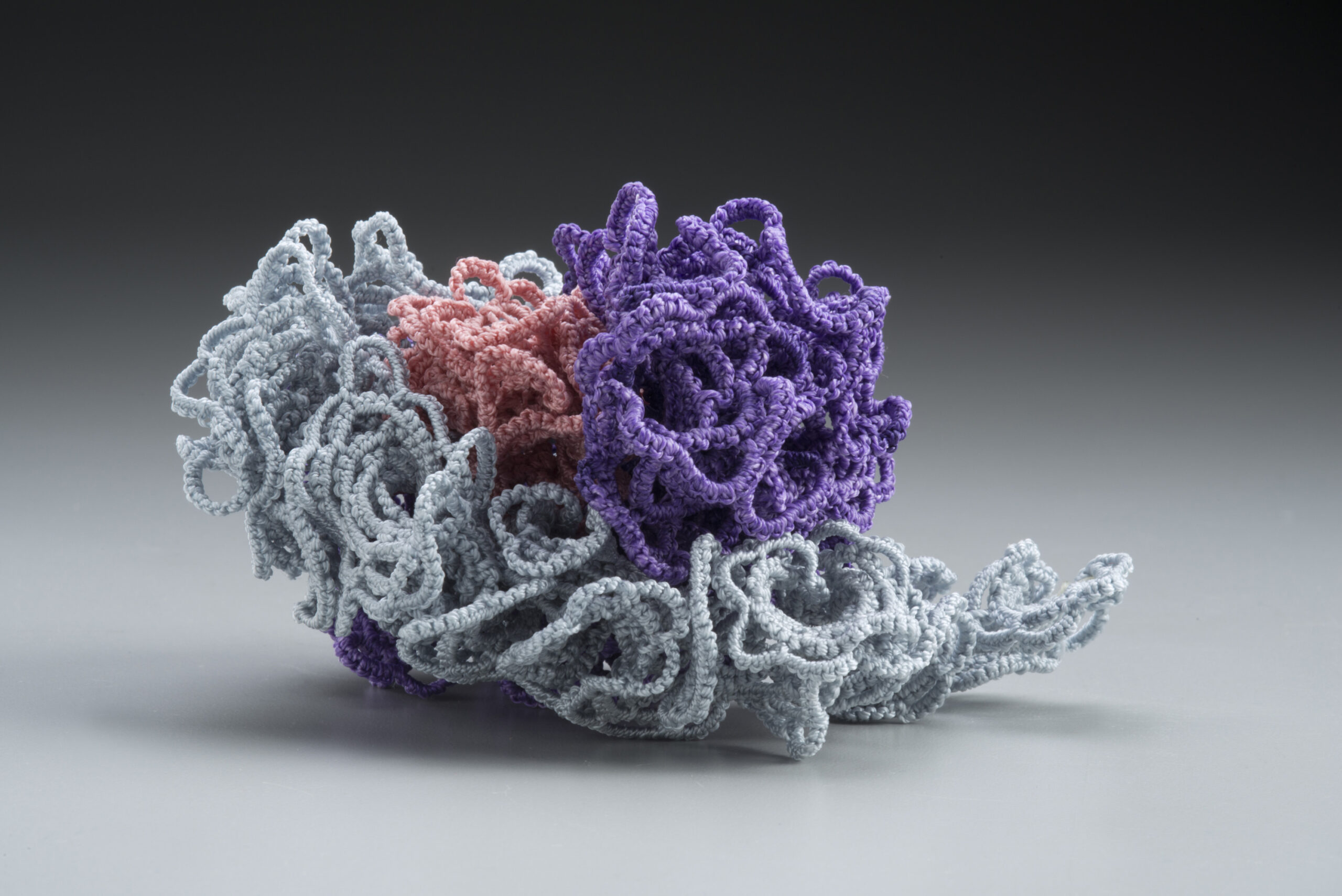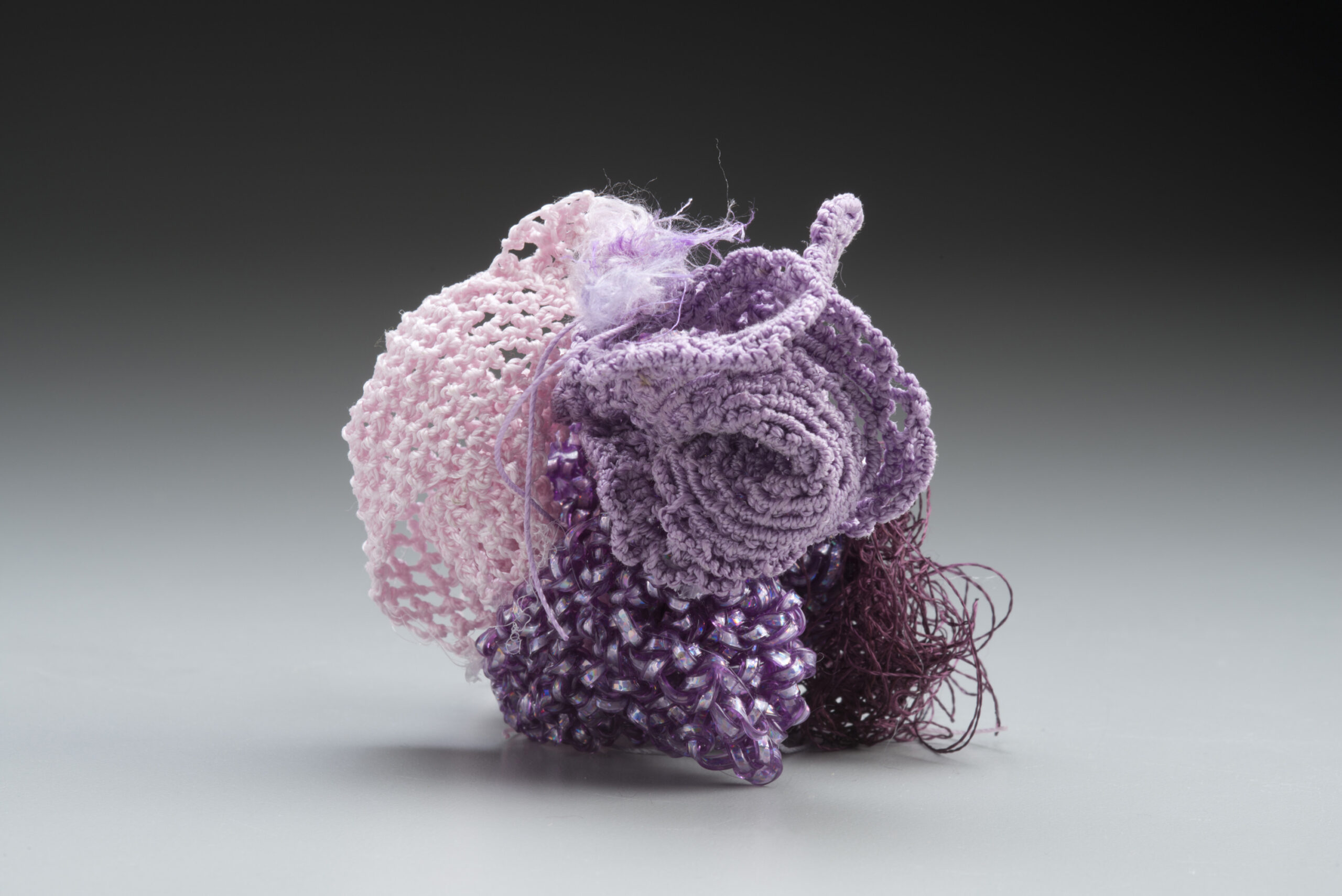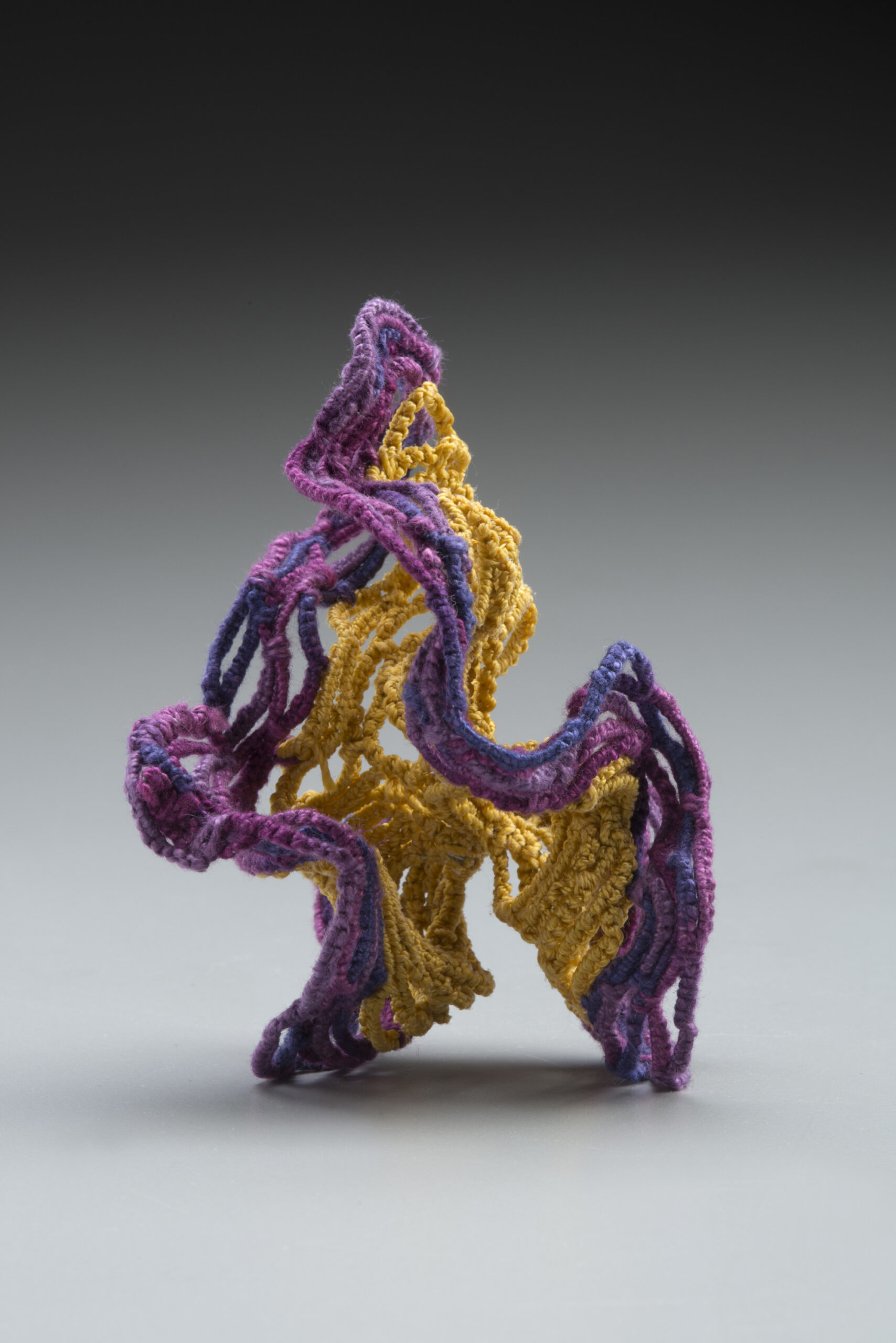Andrea Brewster
Biomorphic Object: Dendronephthya Soft Coral, 2019
Tatting, C-lon cord 3”H x 4.5” W x 2.75”D
Tatting involves making half hitch knots onto a core thread, using a shuttle or needle, that are formed into straight chains and looped rings. I chiefly utilize nylon C-Lon cord, which I find has just the right amount of stiffness and flexibility to allow drawing in space and the creation of enclosed, undulating, topological forms. The piece, Biomorphic Object: Dendronephthya Soft Coral is informed by the colorful Dendronephthya corals found on Indo-Pacific reefs. Interestingly, Dendronephthya corals do not contain zooxanthellae, unicellular symbiotic algae found in many coral species. So, in order to survive, they must capture and consume large amounts of plankton passing by in the surrounding ocean currents.
Andrea Brewster
Biomorphic Object: Pocillopora Coral, 2018
Tatting, C-lon cord, plastic lacing, sari silk 2.75 “H x 2.75”W x 2.5 “ D
I have been drawn towards pushing the boundaries of tatting and creating biomorphic, three dimensional forms. I am particularly intrigued by the underlying mathematical order found in nature, especially among corals and marine invertebrates. For the piece entitled, Biomorphic Object: Pocillopora Coral I was inspired by Pocillopora damicornis that is also known as Lace or Cauliflower Coral. This species has densely compact branches, which gives it a somewhat fuzzy appearance, and is commonly pink in color.
Andrea Brewster
Wave Structure 1, 2018
Tatting, C-Lon cord 4”H x 2.5”W x 2”D
Although my work is improvisatory, I use various types of repeating patterns, hyperbolic geometry and logarithmic scales, as a foundation to “grow” forms out of a predictable order. For my work, Wave Structure #1, I became fascinated by waves and “S” curves, particularly the way in which they embody ‘give and take’; just as one edge advances then another recedes. In this way, these curves echo principles of generation, growth, symmetry and order.


